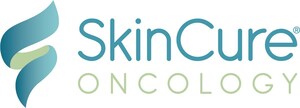Findings signal "seminal moment in the care of skin cancer patients using radiation"
BURR RIDGE, Ill., Feb. 20, 2024 /PRNewswire/ -- SkinCure Oncology, the world leader in providing a comprehensive model for the delivery of Image-Guided Superficial Radiation Therapy (Image-Guided SRT or IGSRT) for the treatment of nonmelanoma skin cancer, presented to dermatology patients as the GentleCure™ experience, announced the publication of research, "Image guidance improves freedom from recurrence in superficial radiation therapy for non-melanoma skin cancer," in Advances in Radiation Oncology, a peer-reviewed journal from the American Society for Radiation Oncology (ASTRO).
Dr. Jeffrey Stricker, who was not involved in the study and who is a board-certified dermatologist, dermatopathologist and Mohs surgeon with Dermatology Specialists in Alabama and a founding member of the American Board of Administrative Medicine, and a past chair of the American Osteopathic Board of Pathology, observed, "This work is the first to directly compare 2-year freedom from progression from a paradigm-changing technology, IGSRT, to its predecessor Superficial Radiation Therapy (SRT). It shows definitively that the new technology is superior, and represents a seminal moment in the care of skin cancer patients using radiation. As a skin cancer specialist physician pursuing the best options for patients, I must emphasize that having a surgery-free option in line with modern outcomes for Mohs micrographic surgery allows me to offer the most effective options for treatment of common skin cancers."
The authors of this retrospective cohort study evaluated the 2-year freedom recurrence rate of nonmelanoma skin cancers (NMSCs) treated by IGSRT compared to existing data on NMSCs treated by SRT without image guidance. 1,602 patients with 2,880 treated lesions were followed. All NMSCs treated by IGSRT had an aggregate 2-year freedom from recurrence of 99.23%. The recurrence rate for basal cell carcinomas (BCC) (N=1382) was 1.1%, for squamous cell carcinomas (SCC) (N=904) 0.8% and for SCCis (N=594) 0.0%. "These recurrence rates," they reported, "are significantly improved compared to a pooled study that evaluated NMSCs across histology (Cognetta) and BCCs alone (Silverman) treated without image guidance (standard SRT) (p < 0.001)." This study is the first to rigorously compare SRT to IGSRT, and it covers all the data that exists on IGSRT.
The authors concluded, "IGSRT offers a paradigm-shifting treatment option for patients with NMSCs – offering statistically significantly improved outcomes compared to standard SRT [without image guidance], and a more desirable toxicity profile to surgical options. This study demonstrates that IGSRT is associated with remarkably low recurrence rates, which are statistically significantly improved from the previous generations of SRT, and in line with modern outcomes for Mohs micrographic surgery."
Superficial radiation therapy was developed over 100 years ago (here) and was the standard therapy for nonmelanoma skin cancer until Mohs micrographic surgery emerged in the 1930's (here). As Mohs surgery produced superior oncologic outcomes, SRT fell out of favor. The development and FDA clearance of IGSRT in 2015 led to a resurgence of interest in this technology, with initial results suggesting significantly improved outcomes over the older SRT.
SRT uses xrays (low-energy kilovoltage photons - 50-150kVp) to confine treatment to the skin. IGSRT allows the clinician to better target and adjust the xrays by more precisely visualizing skin cancers through the use of 22MHz high-resolution dermal ultrasound.
A prior study (here) demonstrated a statistically significant improvement in 2-year recurrence probabilities of NMSCs when treated primarily with IGSRT compared to Mohs micrographic surgery. Daniel J. Ladd, Jr., D.O., Mohs surgeon and Chief Medical Officer of SkinCure Oncology, noted at the time, "This suggests that IGSRT should become a first-line recommendation for patients with early stage NMSCs, like basal cell carcinomas and squamous cell carcinomas, particularly for individuals who are poor candidates for, or who refuse surgical resection."
SkinCure Oncology Chief Executive Officer Kerwin Brandt said, "This impressive new work, authored by researchers from some of the nation's premier medical institutions, adds to the fast-growing volume of peer-reviewed analysis that underscores the value of image guidance with Superficial Radiation Therapy to patients suffering from skin cancer, the most common type of cancer in the United States." Brandt continued, "SkinCure Oncology, long the nation's leader in providing quality practices with Image-Guided SRT, emphasizes that the increasing body of clinical evidence affirms Image-Guided SRT as today's community standard of care for the treatment of NMSC."
IGSRT and the GentleCure experience will be showcased at the upcoming American Academy of Dermatology annual meeting in San Diego, at booth 3555.
About SkinCure Oncology
SkinCure Oncology is the world leader in providing a comprehensive model for the delivery of Image-Guided Superficial Radiation Therapy (Image-Guided SRT), the most advanced nonsurgical treatment for common skin cancer. The company partners with quality-focused dermatologists, Mohs surgeons and other physicians to bring cancer center-level radiation therapy treatment to private practices. Presented to patients as the GentleCure™ experience, Image-Guided SRT is available from some 500 physicians nationwide, with more than 75,000 patients having been treated. Learn more about the company at SkinCureOncology.com, and visit GentleCure.com for helpful consumer and patient information.
Media Contact:
Matt Russell
Russell Public Communications
520-232-9840
[email protected]
SOURCE SkinCure Oncology

WANT YOUR COMPANY'S NEWS FEATURED ON PRNEWSWIRE.COM?
Newsrooms &
Influencers
Digital Media
Outlets
Journalists
Opted In




Share this article